Well you can’t go on a roadtrip like ours and not visit the Northern Rivers region of NSW – arguably the highest concentration of intentional communities, co-operatives, multiple occupancies and people living alternative lifestyles in Australia. I didn’t really know what to expect from these communities and felt slightly apprehensive given their history and reputation – many of them originated out of the counter-cultural Aquarius Festival in 1973 and have been infamous for growing cannabis. However what I discovered was very inspiring and didn’t conform to the stereotype.
Dharmananda, The Channon NSW
Driving along ridges with stunning vistas of rolling green hills and distant mountains, admiring perfectly straight rows of dense macadamia orchards, and passing through quaint villages, you can see why this area attracts artists, growers and people simply wanting to escape the city life. This was our approach to the village of The Channon late one Monday afternoon. A bit further north, after negotiating potholes and bumps, we reached our destination.
I’m not sure why we chose to visit Dharmananda out of all the options, but I feel really blessed to have stumbled upon one of the oldest – over forty years – and most close-knit intentional communities in the district. And after two weeks in this community, I can see why people leave gushing comments in the visitor’s book, make return visits, or are inspired to start up their own organic farm or intentional community.
The beginnings
In the late 60s and early 70s, people were starting to think about alternative forms of living. Carol and Dudley were one such couple. In 1972, after looking at possible locations in NSW and QLD, they finally bought land in a narrow valley just east of Nimbin with a view to establishing an intentional community there.
As you cross the continuously babbling Terania Creek which flows along the bottom edge of the property, pass lush cow pastures and the extensive community garden, and look up towards the houses on the western side of the valley which is covered in tall trees, it’s hard to imagine this land was once completely bald and highly degraded. Progressive clearing for dairy farming and then neglect had left the land devastated by the time Carol and Dudley arrived. However since those early days, a huge amount of work has gone into both restoring the native vegetation as well as establishing a flourishing small-scale farm. This is Dharmananda.
Dharmananda currently has 15 adults and 5 kids. Each individual, couple or family enjoys their own home which is situated in one of 3 clusters. Many of the houses have been built on steep inclines, saving the flats for growing food.
Sights and sounds of the forest
The Bunkhouse, perched on a steep slope behind the Main House, was our accommodation for the fortnight. It was soul-stirring to awaken to birdsong and the distant sound of the rushing creek echoing through an otherwise quiet valley. Occasionally an early morning mist would hang amongst the trees, adding to the sense of peace and mystery.
Something I wasn’t prepared for were all the creatures who came to greet us – huge cockroaches and spiders, a brown tree snake in our rafters, micro-bats, leeches, and of course, ticks (annoying little buggers!). It made me think twice about living in the sub-tropics, but I guess you’d get used to it!
A desire to be self-sufficient
At Dharmananda, the farm is central to their identity and purpose. It’s an expression of their desire to live in harmony with the planet and each other. The work can sometimes be demanding, but it’s also what unites them. Additionally, it’s a means of relating to the wider community. People come from near and far to learn how to farm organically and live sustainably.
Multiple times a day the sound of Leigh’s tractor can be heard as he comes down one ridge and goes up another, always a task to do. Eight plots of five hundred square metres are worked to provide seasonal, organic veggies to the whole community. These plots are divided into rows and each row is managed by a different community member who focuses on growing one type of vegetable.
Another significant part of life at Dharmananda are the dozen or so jersey cows. Every day at the crack of dawn, the “girls” are called in for milking. Like most jobs on the farm, there are a whole range of tasks that surround this job. Each week the community produces two large rounds of cheese and consumes two. On a Wednesday or Saturday morning you’ll find Maggie sitting on a little stool in the kitchen, stirring and chopping as she separates the curds from the whey. I enjoyed chatting and sharing a pot of coffee with her on these mornings. Butter, yoghurt and fetta cheese are also regularly made.
You can’t help but be impressed by Dharmananda’s commitment to be as self-sufficient as possible. They can only achieve this by working together.
Keeping cows
Having greatly reduced our dairy intake in recent years (we observe a vegan diet at home but are more relaxed when receiving the hospitality of others), the cow and dairy component of Dharmananda was challenging for us.
Leigh is one of the original members of the community and has been researching and applying organic and biodynamic farming methods for forty years. He shared with us that throughout history responsible, small-scale farming has always included animals. What they add to the soil (through manure) as well as the food they provide is all part of the system. But are they absolutely necessary, we wondered? We know that humans can live (indeed thrive) off a purely plant-based diet, but can an organic farm be just as productive without the input of animals?
I also wondered about growing soy beans (or similar crop) for protein instead of producing dairy products, but very little of Dharmananda’s land is suitable for growing food – just the small area on the flood plane, which is dedicated to veggies. The surrounding area is too swampy and the rest of the property is too steep, but its fertile nature makes it perfect for milking cows.
Of course having milking cows means keeping them lactating by getting them in calf regularly. And the fallout of that is needing to separate the calves from their mothers, as well as dispose of the males which aren’t useful unless you eat meat. One day during our stay it was time for the calves to be separated from their mothers. It’s a very difficult and stressful task. It can take all day and is physically and emotionally exhausting. And for the next couple of days I found it disconcerting to hear the calves and their mothers mooing to each other in distress at being separated.
Having said all that, the cows are clearly loved at Dharmananda with each being known by name. A calf will even be given physio treatment if born with a weak leg! The chickens are also well treated with plenty of room to roam. This is certainly a far cry from factory farming, and I really respect them for that.
Restoring the natural landscape
One of our tasks during our stay was to help with bush regeneration – pulling out weeds such as lantana and crofton so that native plants have a chance to grow. It was enlightening to see the difference between a hillside that was covered in crofton weed and another where beautiful and diverse, sub-tropical rainforest plants and trees were thriving.
Where others might see it as a chore, Leigh genuinely sees bush regeneration as an enjoyable pastime: “I relax by pulling out lantana”! He achieves a great deal of satisfaction by allowing nature to rejuvenate itself and flourish once again. And after ripping out hillsides of crofton weed myself to uncover handfuls of small and delicate red cedars, straining towards the light, I’m beginning to understand his love for this “work”. It’s elemental. It’s spiritual.
Contribution and connection
Darmananda has always had a strong work ethic, with a policy of “no dope and no dole”. This was especially important in the early days when there was an enormous amount of work to be done in establishing the place.
Every Friday morning, individuals work on different tasks that benefit the community. Then on Saturday morning, everyone dons their boots, hats and gloves and heads down to the veggie garden to get their hands dirty. At 11am, the gong strikes for morning tea and everyone stops to enjoy Maggie’s fresh pikelets (so delicious!) with a cuppa on the Main House verandah. It’s a lovely time to connect and catch up with each other.
Each person is also rostered on for two weekly tasks, such as milking the cows, making cheese, or preparing the evening meal. This shared meal takes place six nights a week in the Main House and is an opportunity for members to come together, enjoy their own produce and celebrate communal life. All these routines keep the farm going as well as strengthen community spirit.
In addition to community commitments, many members work part time in one of the neighbouring towns, some have children to raise, and all of them have their own houses to take care of. Life at Dharmananda is full. This was an important revelation to us. It challenged us to think about whether living in intentional community and sharing tasks and resources would actually allow more time to pursue our own personal creative projects, which is part of the dream for Mike and I.
Another, perhaps less obvious, aspect to life at Dharmananda is spirituality. Original members came with Buddhist values and practised meditation, and they seem to have attracted like-minded individuals over the years. No doubt this shared philosophy contributes to their unity. Incidentally, it was a real treat to spend a night in The Forest Meditation Centre which they share with a neighbouring community. Whilst we didn’t participate in an organised retreat, simply being there was soul-nourishing. I loved the simplicity of the place – a tiny hut to sleep in, a bush shower, a basic kitchen and a fire pit. And the rainforest itself was sublime – a stunning canopy pierced by sun rays during the day and then punctured by stars at night. It was magical.
Communication
Compassionate (or Non-Violent) Communication seems to be an important part of understanding and relating to each other at Dharmananda. Part of this involves taking responsibility for your own feelings rather than blaming the other person. This feeds into their strategy for resolving conflict: if you have a problem with someone, you can go to another person (just one) and ask for their feedback, eg “Am I being too emotional? Should I let this go or should I speak to the person?” I like this idea – it seems like a mature approach and doesn’t support the potential for gossip. One member in particular has put a lot of effort into researching and implementing good communication skills. No doubt this has greatly improved the interdependency within the community.
I really enjoyed the sense of community at Dharmananda – it felt like extended family. Socially speaking, this is my type of community.
Membership and the changing of the guard
At Dharmananda, it takes a trial period of twelve months to become a member, and often this official process only commences after the applicant has already spent some time in the community. Just like other healthy, long-lasting communities, Dharmananda’s intent is to ensure that newcomers are compatible and that the community has continuity.
Once approved, new members are required to buy a share (small non-refundable amount) in the community, as well as pay a more significant “loan” to the co-operative which is refundable if they leave. They may also need to purchase one of the existing houses. The only ongoing cost is a small weekly contribution towards the kitty. Everything comes out of this, from additional food items to farm equipment. Needless to say, living here is far more affordable than the mainstream alternative.
I appreciated chatting with one of the original members one day. She explained that Dharmananda is changing, with the younger and more recent members having a different set of skills and outlook. It must be hard to let go of the old, but her attitude was positive and realistic, acknowledging that you can’t hold onto the same set of people and dynamics forever. New people will do new things, which can be very good of course. “As long as they look after the land – that’s all I hope for” she said.
We also talked about growing older. In mainstream western society, an elder might move in with their child’s family for a time, but then the task of caring for the elder becomes too much and they are sent to a nursing home. Alternatively, in a place like Dharmananda, people can share the task of caring for an elder. What’s more, the elder can continue to contribute to community life, offer wisdom gained from life experience and participate in rich intergenerational relationships. I know where I’d rather be! And the member we spoke to is absolutely certain her family at Dharmananda will look after her in her twilight years – it’s a given.
Last thoughts
I highly recommend paying a visit to Dharmananda! What I particularly appreciated was being assigned to different community members and gaining a unique perspective from each of them. It felt like we were getting a more accurate and rounded picture of community here than we had anywhere else.
There’s a lot to love about Dharmananda and reason to consider joining – the natural environment, the close-knit nature of the group, the desire to be self-sufficient, the care of the land, the strong work ethic, the deep commitment to people and place. However, as well as the dairy component, I think I’d struggle with Dharmananda’s distance from any major city, making it more difficult to visit existing family and friends, as well as attend events. Finally, I’ve realised that whilst I’m happy to contribute to some farm work, this isn’t my passion.
So for now, we’ll keep looking and keep dreaming. Whether we join an existing community or start something new, the jury’s still out.
See Mike’s photo gallery and read his version of our stay at Dharmananda.
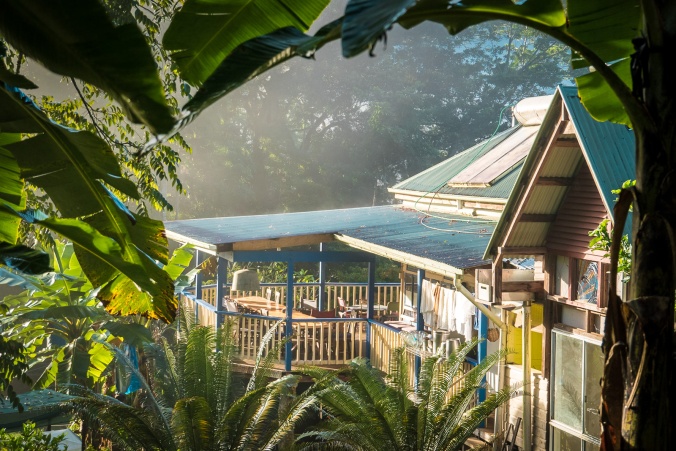


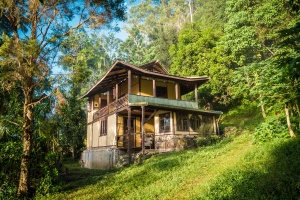







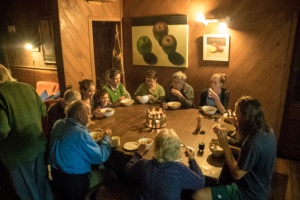

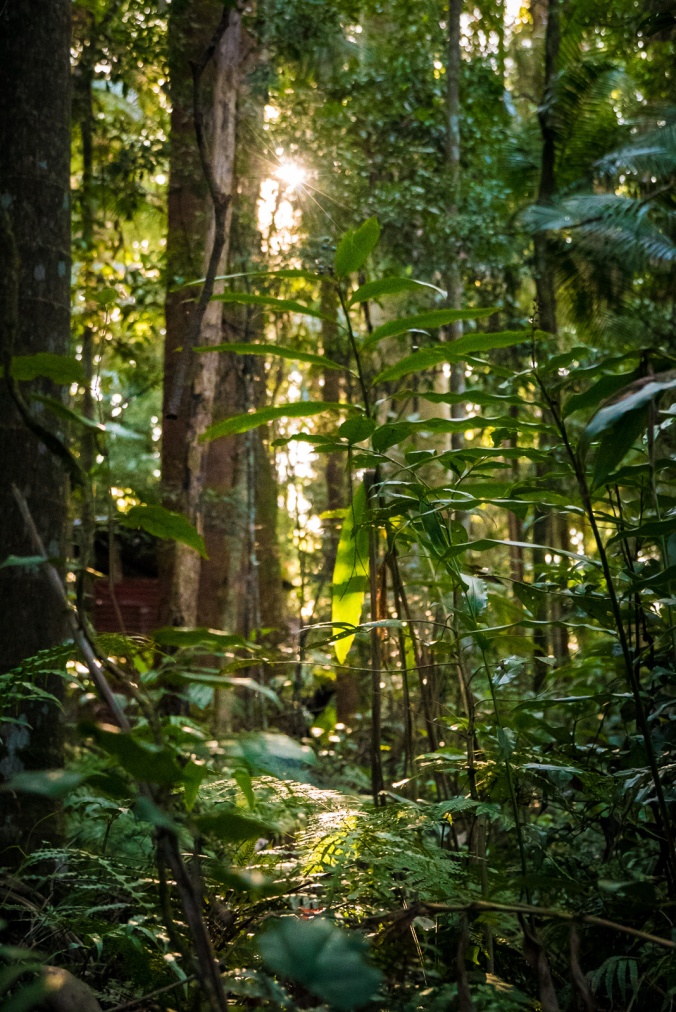

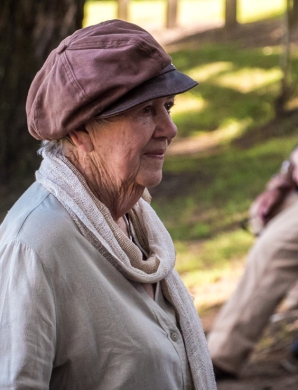
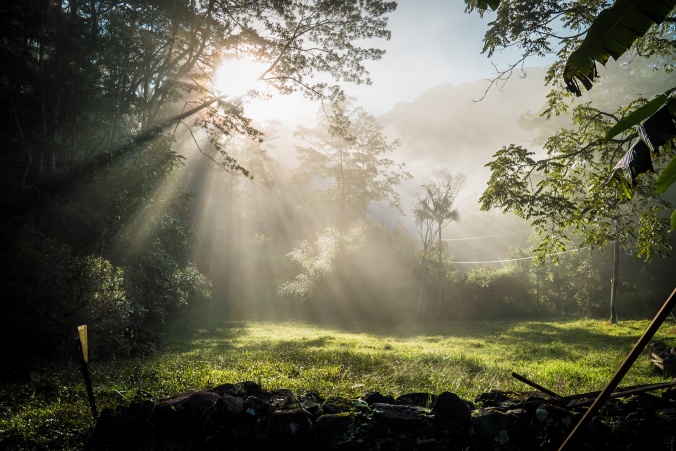

Wonderful!!! Hope I can visit. I said elsewhere…my sister, Celia Theil and family, lived near there, on Rose Rd., Tuntable Creek, overlooking Nimbin. Beautiful country…but I’m not keen on leeches and ticks.Keep safe…JBU
Sent from my iPad
>
LikeLike
Yes, I remember you saying that Celia lived in the area. Do any of the family still live there? Yes, it’s a very very pretty part of Australia. As for the creepy-crawlies, nothing bothered me much, except for the ticks… but I probably only had five or so in the two weeks we were there, and we were trudging through lots of long grass! Blessings to you too dear friend xx
LikeLike